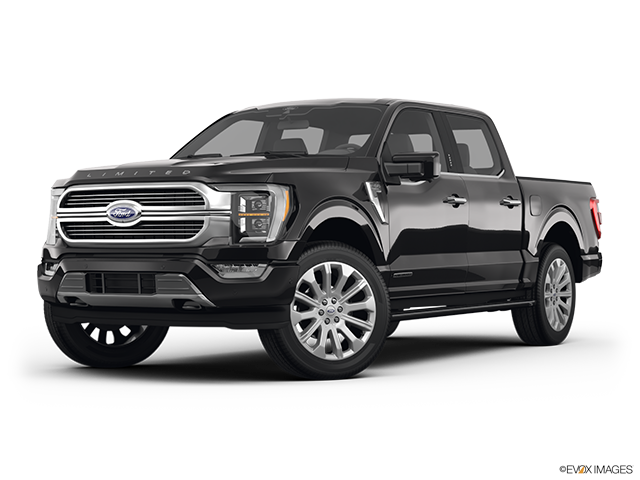Nearly 12,700 workers are now on strike, currently targeting one plant of each of Ford, General Motors, and Stellantis
Article content
The United States’ United Auto Workers (UAW) union mid-September voted to hit the picket line and strike, after its leadership failed to reach a new deal for a contract with the Detroit Three automakers — Ford, General Motors, and Stellantis — for the first time since 2019, Reuters reports. The action, started September 15, marks the first time in the UAW’s 80-year history that it’s initiated a strike across all of Detroit’s major car manufacturers at the same time.
Advertisement 2
Article content
More than 12,700 workers walked off the job on Friday, with three assembly plants — one from each of Ford, GM, and Stellantis — currently targeted by the labour disruption. President Shawn Fain said September 18 that if no “serious progress” was made in negotiations before the following Friday, September 22, strikes would roll out at additional facilities across the U.S. At the time, he explained that little to no progress made over the first weekend of the strike.
When Fain joined the picket line at Ford’s Michigan Assembly Plant on September 15, he addressed claims the union had not made appropriate counteroffers. “We made counteroffers tonight,” Fain told reporters, “It’s their fault. They waited ’til the last minute.” He claimed the automakers were aware of the UAW’s demands for five weeks, and that the union “had to file unfair labour practice claims to get two companies to the table,” reports Autoblog. “This isn’t just about the UAW. This is about working people everywhere. We’re going to be out here until we get our share of economic justice, and it doesn’t matter how long it takes. America is better than this.”
Advertisement 3
Article content
The news of the strike comes just as the North American International Auto Show in Detroit opened September 13; it will finish on September 24. The locations targeted by the UAW strike action currently include Missouri’s GM Wentzville Assembly, which produces the Express and Savana vans; and Chevy Colorado and GMC Canyon pickup trucks. Also targeted is Stellantis’s Toledo Assembly Complex in Ohio, which manufactures the Jeep Wrangler, Wrangler 4xe, and Gladiator; and the Ford Michigan Assembly Plant, where the final assembly and paint of the Ford Bronco and Ranger take place. Workers from other facilities will remain in place until further decisions are reached.
The UAW’s strategy seems to be start with a “warning shot” before taking aim at some of the automakers’ most popular makes and models, like Ford’s River Rouge plant, where the F-150 and F-150 Lightning are built. The union is also sitting on a US$825 million strike fund, which could dwindle as the strike persists. Striking workers will get paid $500 per week. However, calling other units and facilities to take strike action could significantly slow down production at the Big Three plants, forcing the automakers to table what they feel is a favourable deal.
Advertisement 4
Article content
-

Stellantis offering voluntary buyouts to Canadian employees
The strike occurred after both sides failed to reach an agreement on Thursday, September 14, at 11:59 p.m. At a time when automakers are reportedly bringing in record profits, “record contracts” should also be a part of the deal, Fain said. “Ford, General Motors, and Stellantis made a combined US$21 billion in profits in just the first six months of this year,” he added.
For its almost 150,000 members, the UAW first wants a 36-per-cent general salary raise over four years. UAW employees earn between US$18 and US$32 per hour, depending on seniority. It also wants to eliminate the tiered wage system introduced in 2007; bring back cost of living adjustments; reintroduce defined-benefit pensions; and reduce its members’ weekly workload to 32 hours from 40 hours, without impacting wages.
Stellantis made an offer on September 8 that included a 17.5-per-cent pay increase over a roughly four-year period. Meanwhile, Ford’s proposal included a 20-per-cent wage increase over four years. Ford’s offer is also said to have included cost-of-living adjustments, the end of the wage tiers, improved healthcare benefits, and more paid time off. GM offered an 18-per-cent salary bump over four years.
Denial of responsibility! Samachar Central is an automatic aggregator of Global media. In each content, the hyperlink to the primary source is specified. All trademarks belong to their rightful owners, and all materials to their authors. For any complaint, please reach us at – [email protected]. We will take necessary action within 24 hours.

Omprakash Tiwary is a business writer who delves into the intricacies of the corporate world. With a focus on finance and economic landscape. He offers readers valuable insights into market trends, entrepreneurship, and economic developments.









Comments
Postmedia is committed to maintaining a lively but civil forum for discussion and encourage all readers to share their views on our articles. Comments may take up to an hour for moderation before appearing on the site. We ask you to keep your comments relevant and respectful. We have enabled email notifications—you will now receive an email if you receive a reply to your comment, there is an update to a comment thread you follow or if a user you follow comments. Visit our Community Guidelines for more information and details on how to adjust your email settings.
Join the Conversation